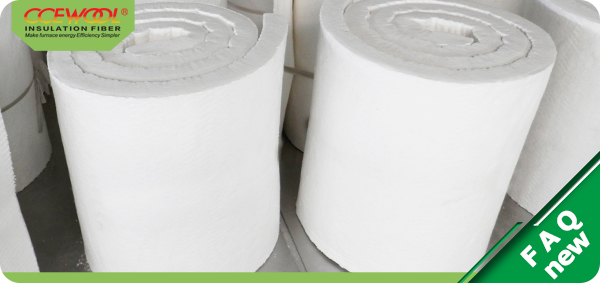Ceramic fiber, known for its high efficiency as an insulation material, has gained widespread recognition and use in various industrial applications. Its excellent thermal insulation performance, high-temperature resistance, and lightweight properties make it an indispensable material in high-temperature environments. One important parameter to consider when selecting ceramic fiber products is their density. Understanding the density of ceramic fiber is crucial for choosing and utilizing this material effectively.
What is the Density of Ceramic Fiber?
The density of ceramic fiber typically refers to the mass of the material per unit volume. The density range usually falls between 64 kg/m³ and 160 kg/m³. Different densities are suited for different applications, directly affecting the thermal insulation performance, mechanical strength, and flexibility of the ceramic fiber.
Here are some common density classifications and their respective application areas:
64 kg/m³: This low-density ceramic fiber is very lightweight, easy to cut and install, and is typically used in applications requiring high flexibility, such as pipe insulation, equipment insulation, and furnace door seals. The advantage of this material lies in its lightness and operability, making it convenient to use in complex shapes and confined spaces.
96 kg/m³: Medium-density ceramic fiber strikes a good balance between strength and flexibility. It is suitable for medium-temperature environments where higher insulation performance is required, such as in the petrochemical industry, metal processing, and electrical equipment insulation. This type of product can provide good insulation while maintaining certain mechanical strength and durability.
128 kg/m³: This higher-density ceramic fiber offers superior thermal insulation performance and mechanical strength. It is widely used in the linings of high-temperature industrial equipment, such as metallurgical furnaces, kilns, and high-temperature pipe insulation. Its higher density means better stability and durability in high-temperature environments, reducing heat loss and improving energy efficiency.
160 kg/m³: The highest density ceramic fiber is typically used in the most demanding high-temperature environments, requiring the highest mechanical strength and minimal heat conduction. This material is suitable for extreme conditions, such as high-temperature combustion chambers, aerospace equipment insulation, and components that need to withstand high mechanical stress. It maintains excellent performance under the most challenging conditions, ensuring the safety and efficiency of the equipment.
Why Density Matters
The density of ceramic fiber directly impacts its insulation capability and mechanical strength. Higher density usually means better insulation and greater durability, making it suitable for high-temperature, high-stress applications. Lower density, on the other hand, offers better flexibility and ease of handling, ideal for applications requiring flexible installation.
When selecting ceramic fiber, understanding and determining the required density can help users choose the most suitable product based on specific application needs. This not only ensures the effective use of the material but also enhances the overall efficiency of the equipment and extends its service life.
Post time: Sep-02-2024


